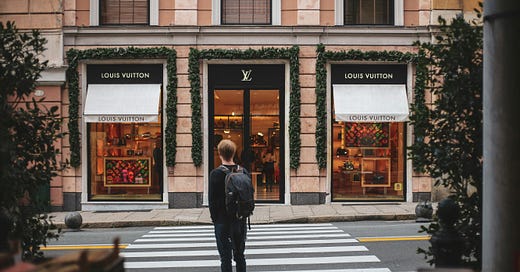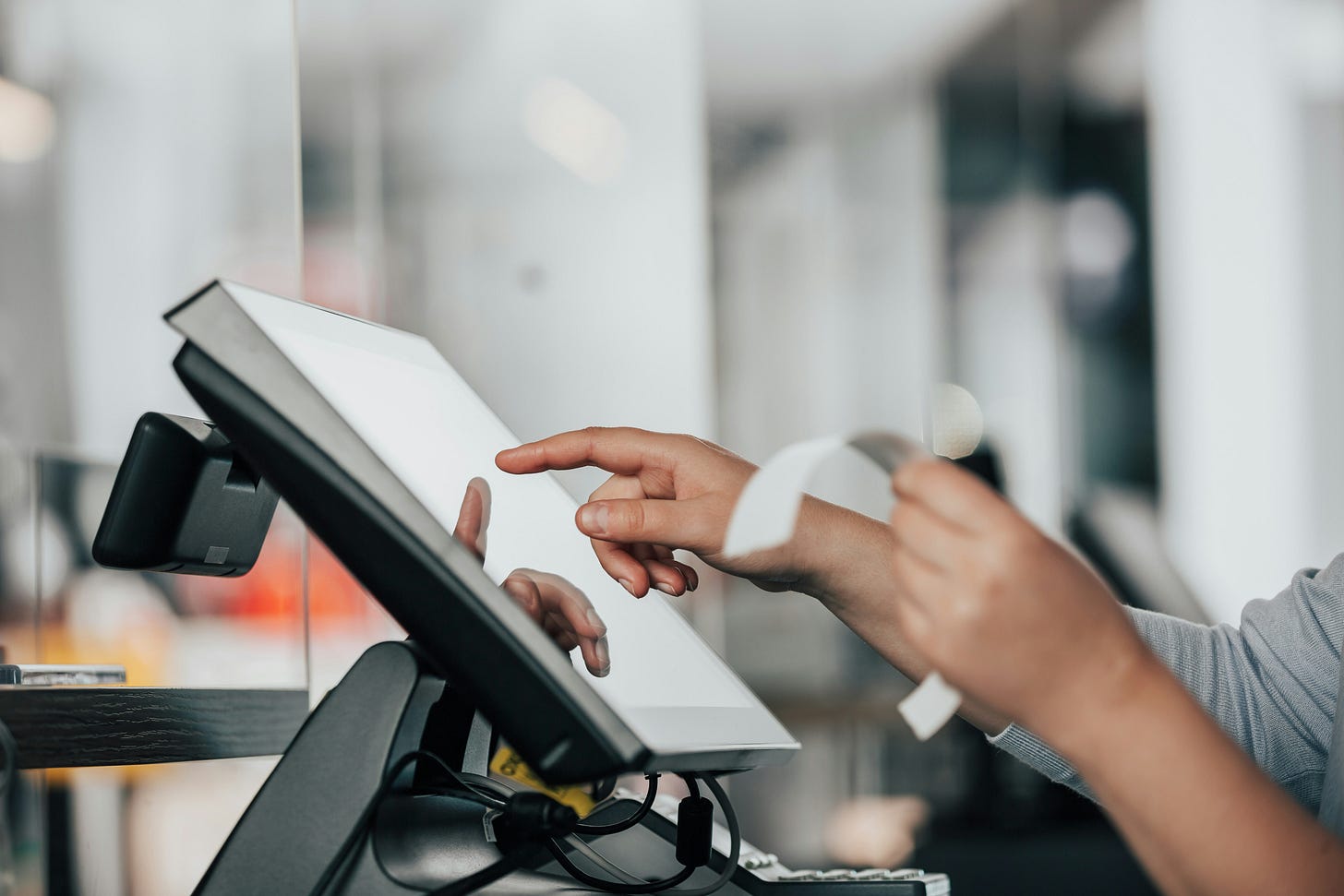Sometimes it feels like 2025 is shaping up to be the year that is impossible to predict.
The speed with which things are changing and developing – at a political level, at a technological level – is creating mass uncertainty. It’s possible that between us sending this and you reading it that things will have changed again.
What we do know is that, even in an uncertain climate, consumers spend. So, what does this look like in 2025? And does this consumer spending behaviour differ between the US and the UK?
To find out, we’ve asked the brilliant Melissa Minkow to share her observations from the US, while our own Jack Stratten offers his insights from the UK.
Just remember there’s no such thing as a dead cert in 2025.
How do you see consumer spending changing over the rest of 2025?
Melissa - In the US, 2024 was a year of growth, mostly thanks to the fact that retailers could offer strong discounts, and consumers, driven by an urge to save everywhere possible, reacted well to that.
In 2025, consumer confidence has dropped to its lowest level in 12 years, the stock market has been extremely volatile, the price of goods has been such a hot topic because of just finishing off an election year, and 54% of consumers in our annual Connected Retail Study told us they expect prices on most goods to go up.
So, I just don’t see a world in which retail sales growth is feasible. Shoppers are at a breaking point in terms of stress over prices, and retailers aren’t in a position this year to offer the strong discounts of last year, as they’re trying to cut costs everywhere possible in the face of potential tariffs. I believe pullbacks will happen in every category.
Jack - I think it’s almost impossible to see anything other than an overall drop in consumer spending. Global conditions, as well as UK-specific ones, just point to that - and that’s whether you’re looking at lower or higher income consumers.
But of course, the picture will be complex. I think traditional luxury brands and sectors will feel the pinch, and consumers will cut down on lots of non-essentials.
However, I also wonder whether 2025 will be so turbulent, given everything Trump is up to, that we will see some Covid-like consumer behaviours.
By which I mean, lots of cautious spending, a focus on low-cost grocery shopping - but also a bit of splurging too. What’s going on in the world continues to fuel anxiety in customers, and during Covid that anxiety actually led to many luxury brands doing well. Luxury purchasing became a release.
So even within grocery, I think customer spending will be complex. They will be laser focused on discounts, savings and offers - but also looking for indulgence and treats.
I really don’t think there are many consumers left who ever act in a wholly cautious and rational manner, month to month. There is always their own version of indulgence.
What matters most to consumers at the moment when making buying decisions?
Melissa - No matter how we ask the question in our surveys, consumers are prioritizing low prices when making decisions.
They not only say they choose brands and retailers based on who’s offering the lowest price, but also that they choose the channel (app vs website vs brick and mortar) based on which they think will offer the lowest price.
After price, it’s about having the assortment they want- products absolutely must not only be relevant, but on-trend given how trend-driven consumers have become.
Jack - For me, what matters more than ever is clarity - clarity of the brand, product, proposition and offer.
Retailers know budgets are being squeezed, as do brands. So they’re fighting ever harder for attention - whether that’s for new products or ranges, or special offers.
Retail media is at the heart of that, which is absolutely booming online and offline.
But from the consumer point of view, this is fuelling saturation, and a sea of sameness.
Consumers desperately want clarity, and the right choices - not just choice.
The typical soft drinks aisle in a big supermarket now is just a wall of similar looking brands, similar offers and similar discounts.
For a consumer that’s increasingly cost-conscious and eager to find the right product and the right deal, this is a problem that needs to be fixed.
How is the volatile - and fast-changing - political environment impacting things?
Melissa - I believe the volatility has forced consumers to be more aware than ever before of their expenses.
It’s not normal to be discussing the price of eggs on a daily basis, it’s not normal to wonder if on any given day, a tariff will be levied on a certain product or country. Having this type of conversation on a daily basis is causing US consumers to think about prices more than they have ever needed to.
Additionally, it’s making consumers more thoughtful about the values of the brands they shop. As we’ve seen with Target now experiencing eight straight weeks of footfall decline, consumers are clearly shopping their values- rewarding brands they agree with and punishing those they don’t.
Last year consumers didn’t have to think as intentionally about the values of the brands they were shopping. Now that brands have to make clear cut, out-there decisions on their values, consumers have to see it and decide where they stand.
Jack - UK retail is dealing with two kinds of political challenges.
On the one hand, like most countries around the world, our economy is to a large extent at the mercy of whatever Donald Trump announces. The markets react, and that has a knock-on effect in a multitude of very real and sometimes painful ways.
But on the other, our domestic political challenges impacting the retail industry haven’t gone away. Nothing has been done to make business rates more manageable for many high street retailers. Salary and National Insurance costs have increased, placing more pressure on labour costs. Energy prices will jump again in 2025.
Put simply, it’s all making tight margins even tighter - and this of course is felt most within low-margin retailers.
It isn’t difficult to see why supermarkets, for example, are so enthusiastic about retail media. It offers the potential of high-margin revenue at a time when they need it most.
What missed opportunities are there for retailers to smooth the path to purchase?
Melissa - We see a lot of resistance to downloading retailer apps. However, if consumers do shop multiple retailer channels, we know there’s a likelihood of larger baskets.
Knowing that consumers don’t want to download individual retailer apps, my challenge to retailers is to either 1) make such a good app that it’s compelling to download or 2) why not combine with a non-competitive retailer and make a “super app” so that consumers only have to download one but can experience two retailers?
There’s also the obvious clutter and clunkiness that should be eliminated, such as apps or websites that are too slow, have too many advertisements, require shoppers to remember their password every time, or make it difficult to modify items in the cart once they’re there.
Also, looking at the Connected Retail data and seeing that research is now happening before discovery, and that discovery is unintentionally occurring during other shopping missions or knowledge quests, becoming a part of search in as many places as possible is crucially important.
How can consumers discover your products when they’re researching/searching something else? That’s the most frictionless path to purchase if you’re easily discoverable in a non-salesy way.
Jack - I think retailers of all shapes and sizes need to work harder on curation.
With retail, brand, product and advertising saturation building, offering the right options - not just all options - is vital for helping the customer.
Retailers need to make their data work harder, and really use it to understand who their customer is, what they want and what they don’t.
Unless you’re one of the handful of retailers that can reliably offer the most products at the cheapest prices, like Amazon, you need to offer something else for customers.
I also think retailers need to simplify their pricing, discounts and loyalty offerings. In the desperate fight to appear the best value option for a customer, so many retailers - and especially supermarkets - present confusing and convoluted offers.
In a saturated retail world, offers need to be clear, bold and simple. Do not create a situation where the customer is doing arithmetic in the fresh food aisle.
What long-term changes - if any - are emerging in spending behaviour?
Melissa - While I do think consumers will forever remain this heightened level of cost conscious, I also think there’s simultaneously a shift towards desiring quality products.
I believe that as consumers start to realize how much they’re overspending when it comes to being upcharged, they also are going to care more about the waste they’re generating when products aren’t long-lasting. Being able to justify a spend will require brands to pass a certain quality test in the future.
Jack - I think the biggest long-term change in consumer spending and habits is a deeply fundamental one: they don’t and won’t follow historical patterns.
Economists since Covid have regularly been left floundering in their analysis of behaviours that don’t make sense. And that’s because there is little historical precedent for what’s happening.
TikTok Shop and its massive growth has no precedent. Teenagers buying luxury handbags through BNPL services has no precedent. Donald Trump’s entire economic strategy has no real precedent.
All of this, inevitably, presents consumer spending habits that don’t entirely make sense.
The biggest conclusion from me in the UK is that we can no longer easily pigeonhole customer types in terms of their spending.
The budget shopper is rarely just a budget shopper. The person who can’t afford luxury may still be one of the most relevant luxury targets.
To some degree, reliable predictions about consumer spending are dead. We can observe, hypothesise and speculate - and actually we should.
But we should no longer trust anyone who offers a consumer spending prediction with any certainty. Including me!







